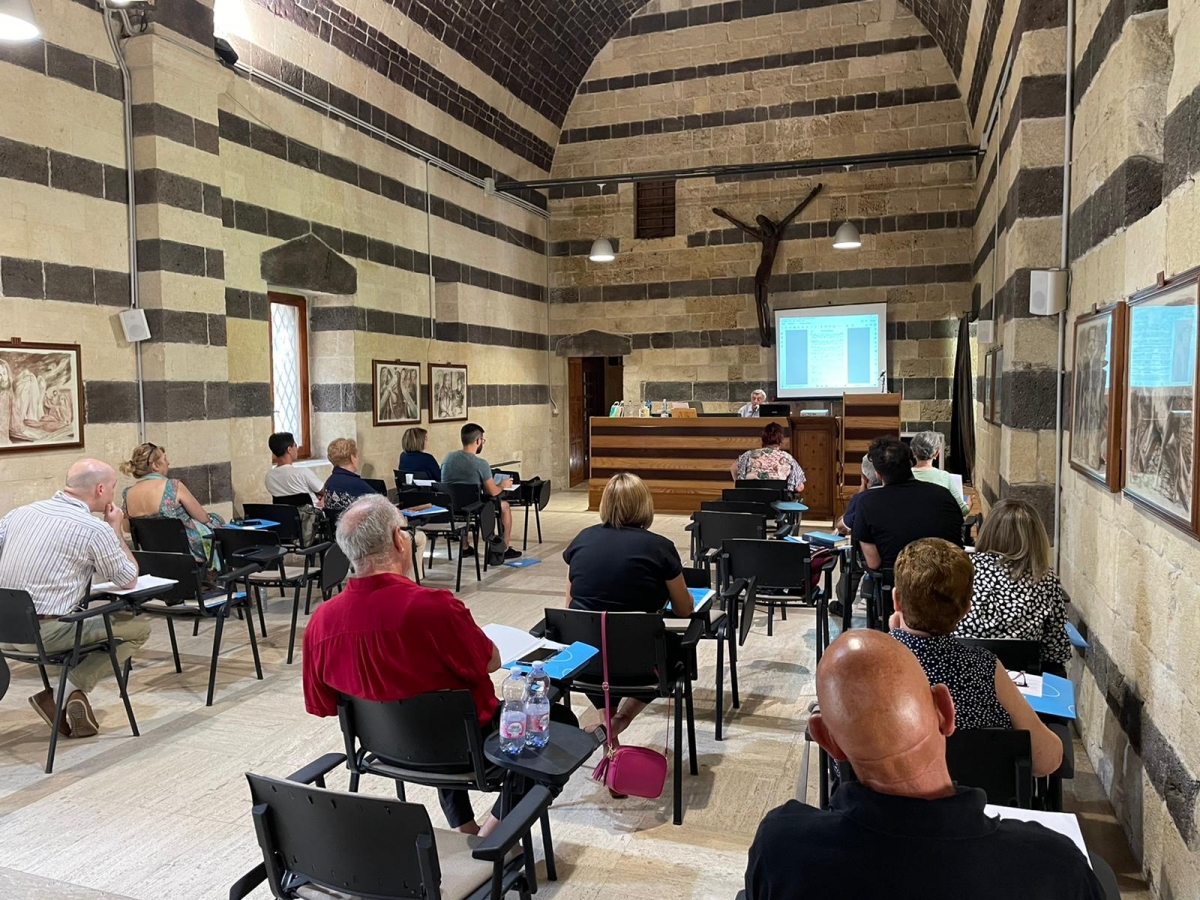News
The project "Finestre sul chiostro" has successfully concluded at the abbey of San Pietro di Sorres.
The initiative dedicated to Gregorian chant was organized by Fersaco. The courses were overseen by Guido Milanese and Enrico Correggia.
A journey into the ancient liturgical tradition of Gregorian chant, amidst the silences and cultural treasures of a place immersed in nature, the abbey of San Pietro di Sorres, in Borutta. Three days of in-depth study entitled "Windows on the Cloister" that the Sarda Regional Federation of Choral Associations has included in the range of training initiatives aimed at choir members and choir directors, organized periodically by the association that brings together about eighty vocal groups from all over the Island. The seminars and workshops that took place from July 1 to 3 in the monumental complex were led by teachers Guido Milanese and Enrico Correggia, scholars of medieval repertoire. The participants concluded their journey by intoning Gregorian chants during the Compline on Saturday and the Holy Mass that took place on Sunday in the Romanesque church. "The Fersaco aims to multiply growth experiences for its members – asserts the Vice President of the association, Maria Maddalena Simile – and for this reason, we are diversifying the themes of choral study. On this occasion, we focused on Gregorian chant, relying on the support of two Masters like Guido Milanese and Enrico Correggia. The contribution of Abbot Father Luigi Tiana and the community of monks of San Pietro di Sorres, who always welcome us with great warmth and friendship, was fundamental for organizing the event. A thank you also goes to the mayor of Borutta, Silvano Arru, who wanted to personally meet the participants to greet them." One of the teachers of the training course, Guido Milanese, is a professor of the history of liturgical music at the Istituto Superiore di Scienze Religiose in Genoa, where he directs the vocal ensemble Ars Antiqua. He holds a position as a full professor at the Università Cattolica and is a lecturer at the Università della Svizzera italiana. He is also the director of the journal "Studi Gregoriani" and a member of the scientific committee of the Swiss musicological journal "Vox Antiqua." "San Pietro di Sorres is perhaps the best place in Sardinia to organize appointments of this kind – says Milanese – because it is a medieval abbey where the notes of Gregorian chant have resonated for centuries. The seminar I held delved into the basic aspects and aimed to introduce the fundamental elements of this genre. The response from the choir members was of profound interest." A more specialized seminar was held by Enrico Correggia, a scholar of medieval and Renaissance sacred repertoire, who has collaborated with various professional entities in Italy and abroad, including the Cappella Musicale Pontificia Sistina. "I focused on the aspects related to tropes and sequences, repertoires that characterized the entire Western medieval world, particularly the area of the Holy Roman Empire. A path – says Correggia – aimed at choir members who already have a background knowledge of Gregorian chant. This genre, contrary to what is often thought, is not exclusively for men: women have always sung this repertoire, both in female monasteries and in double ones. Moreover, today the number of female Gregorian chant groups is increasing across Europe compared to male ones." The study paths led by the teachers converged in a practical workshop that offered participants the opportunity to experience the singing of a Compline (the last prayer of the day) last Saturday and the Holy Mass in the abbey on Sunday, July 3, in the presence of the faithful. Milanese and Correggia alternated in conducting, while the repertoire touched various styles, from Romanesque-Franco chant to prose, as well as Hispanic chant and "fratto" chant, the latter being a type of monodic writing that, in addition to pitch, conveys the value of the notes. A mix that, contrary to how it is often conceived in the collective imagination, makes Gregorian chant a type of music with profoundly different nuances. The activities of Fersaco will continue in the coming weeks. All updates on initiatives aimed at choir members and choir directors can be found on the website www.fersaco.it.
Source: www.meilogunotizie.net
Date and times
07 July 2022

